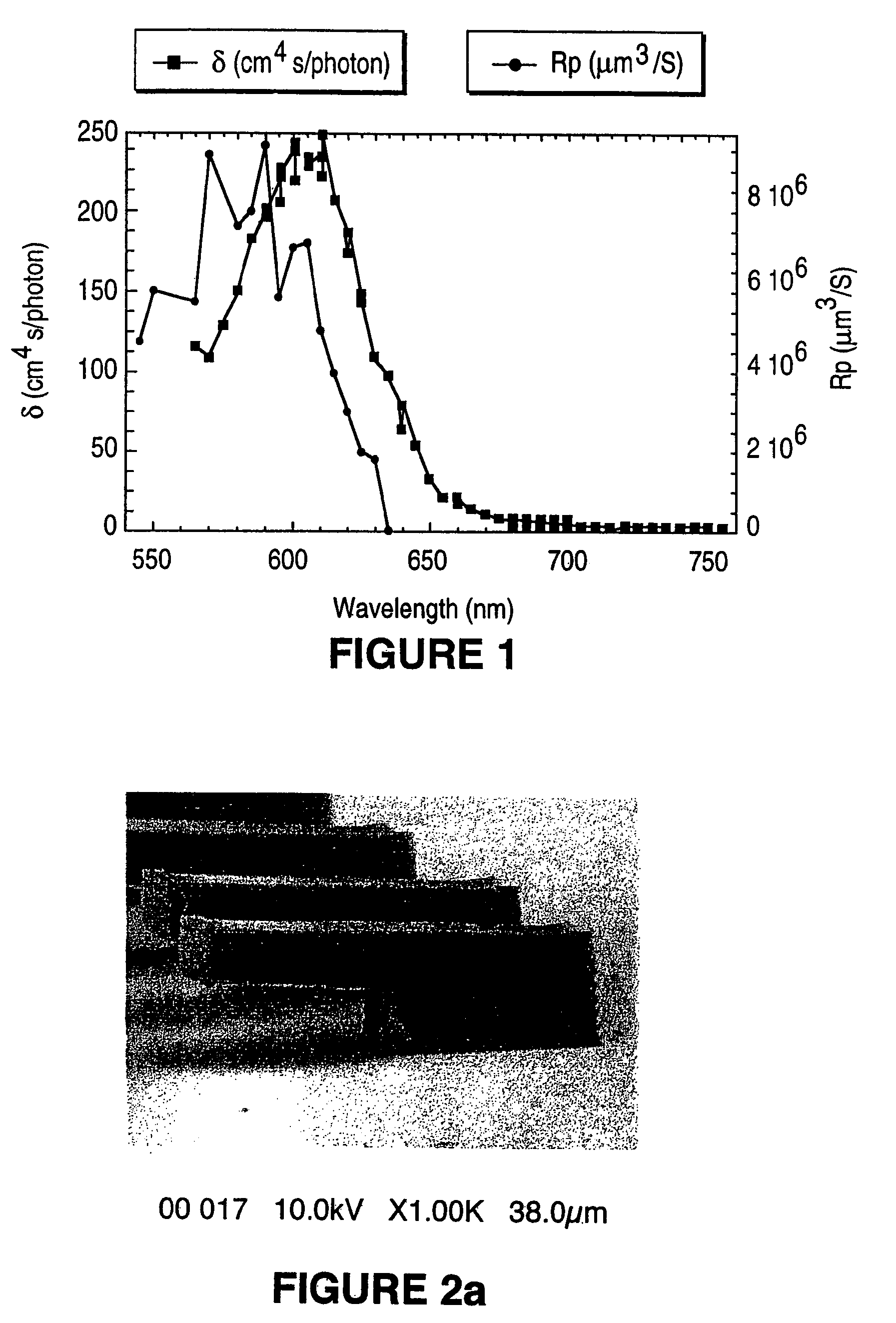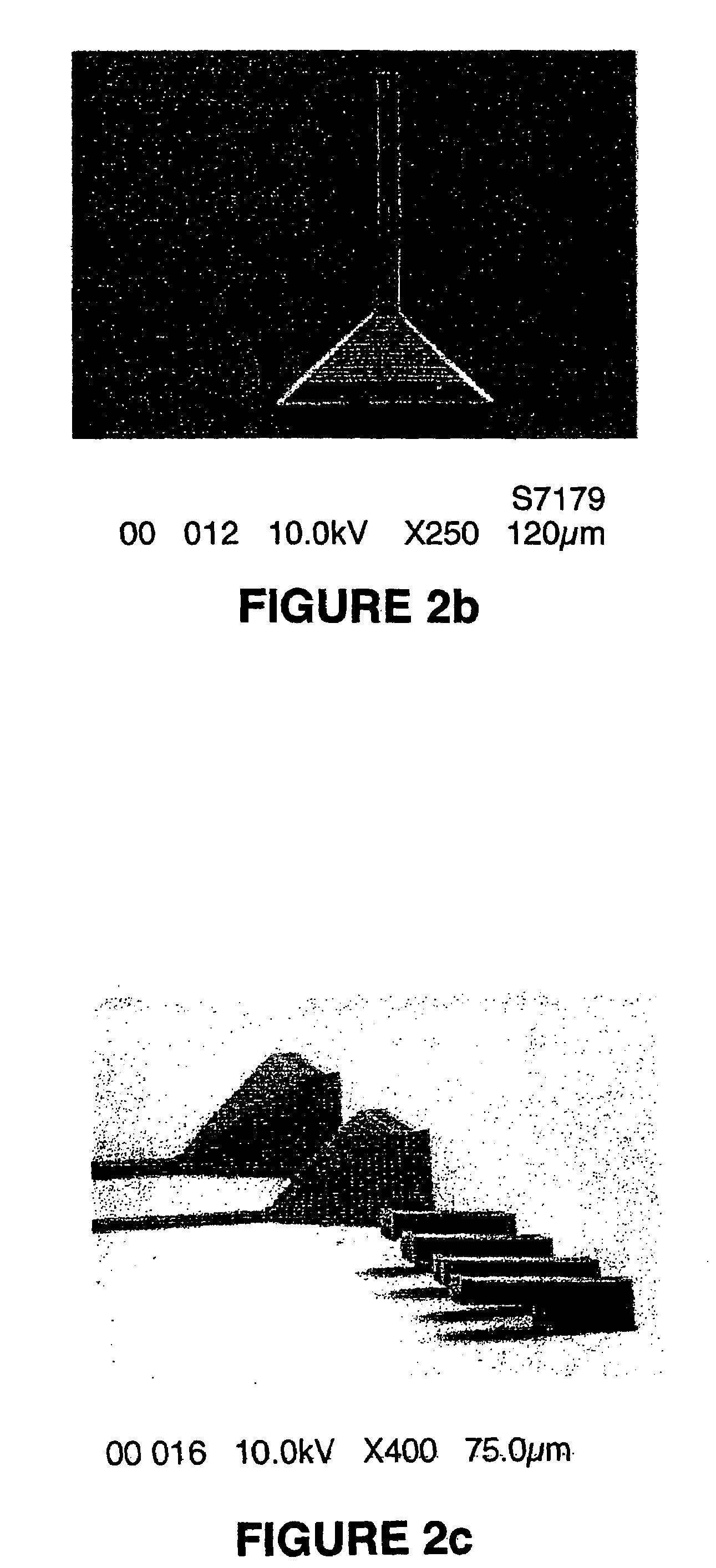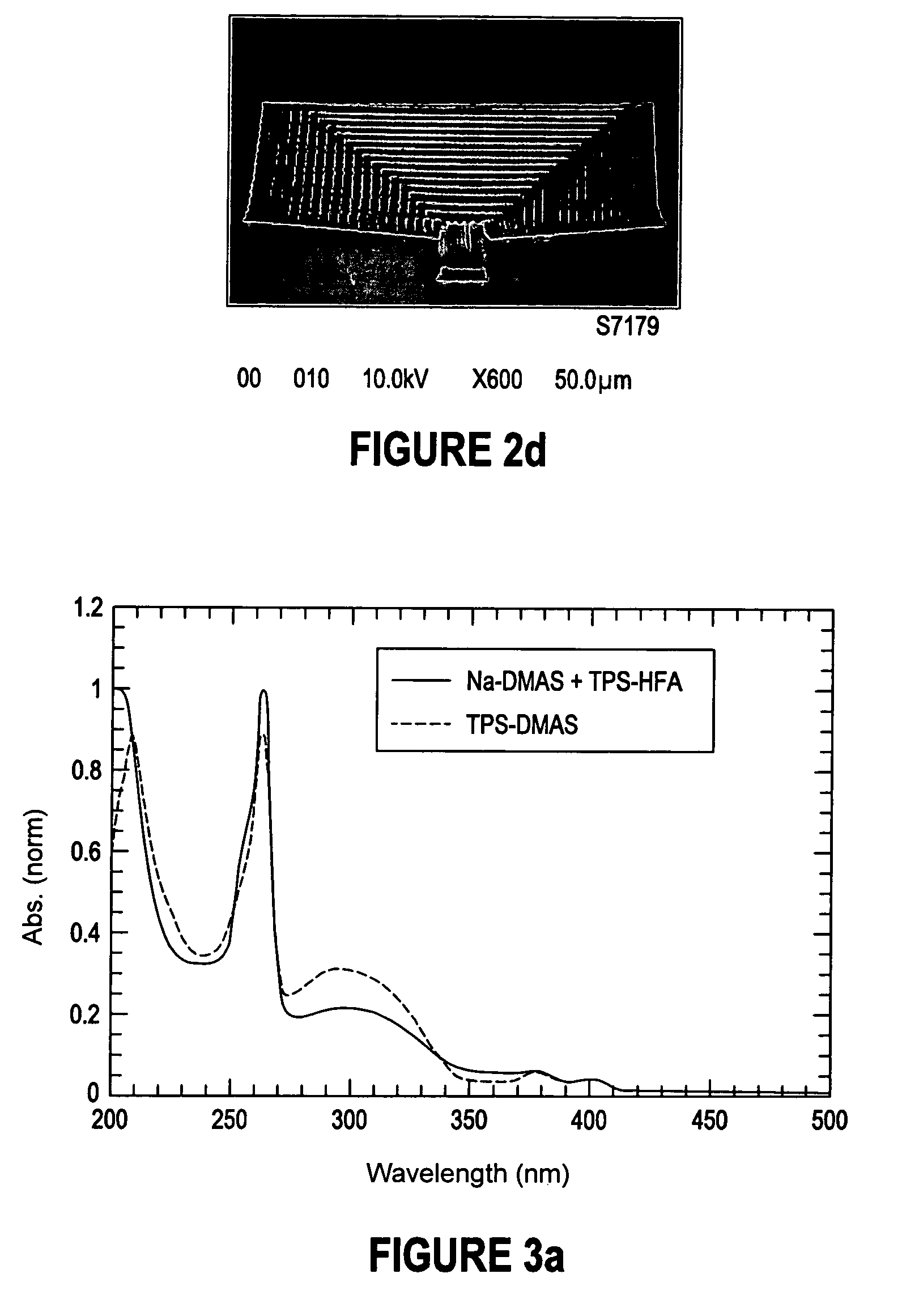Two-photon or higher-order absorbing optical materials for generation of reactive species
a technology of optical materials and reactive species, applied in the field of materials, can solve the problems of limited spatial control of two dimensions, and insufficient strength of two-photon absorbing dyes
- Summary
- Abstract
- Description
- Claims
- Application Information
AI Technical Summary
Benefits of technology
Problems solved by technology
Method used
Image
Examples
examples 1 – 6
Examples 1–6
Exemplary Syntheses of Compounds V, VI, VIII, IX, X and XI
[0197]
[0198]General Remarks. 1H and 13C spectra were recorded on a GE QE300 spectrometer (1H at 300 MHz; 13C at 75 MHz). Mass spectral data were acquired by MALDI-TOF. Elemental (CHN) analysis were performed by Analytical Microlabs.
example 1
Preparation of Compound V.
[0199]V was synthesized via the Pd(0) catalyzed coupling of 2,7-dibromofluorenone with bis-(4n-butylphenyl)-amine under the conditions reported by Barlow and co-workers [Thayumanavan, S., Barlow, S., Marder, S. R., Chem. Mater., 9, 3231–3235 (1997)] and purified by silica chromatography (10% CH2Cl2 / hexanes). Blue oil. 43% yield. 1H NMR (acetone-d6, 300 MHz) δ 7.34 ppm (d, J=8.2 Hz, 2H), δ 7.13 ppm (m, 10H), δ 7.02 ppm (d, J=2.2 Hz, 2H), δ 6.98 ppm (d, J=8.4 Hz, 8H), δ 2.57 ppm (t, J=7.8 Hz, 8H), δ 1.60 ppm (m, 8H), δ 1.35 ppm (m, 8H), δ 0.92 ppm (t, J=7.3 Hz, 12H); 13C NMR (CD2Cl2, 75 MHz) δ 129.9 ppm (broad), δ 125.6 ppm, δ 125.4 ppm, δ 125.4 ppm, δ 125.3 ppm, δ 125.2 ppm, δ 118.3 ppm, δ 35.5 ppm, δ 34.2 ppm, δ 23.0 ppm, δ 14.2 ppm. MS yields M+ with m / z=738. Elemental Analysis Calculated for C53H58N2O: C, 86.13; H, 7.91; N, 3.79. Found: C, 85.53; H, 7.97; N, 3.76.
[0200]Preparation of 2,7-dibromofluorenone. 2,7-dibromofluorenone was prepared from fluorenon...
example 2
Preparation of Compound VI.
[0202]VI was synthesized via the Pd(0) catalyzed Heck coupling of N,N-bis-(4-n-butylphenyl)-4-styrylamine with 2,7-dibromofluorenone in 25% yield. One equivalent of N,Nbis-(4-n-butylphenyl)-4-styrylamine was added to 0.45 equivalents 2,7-dibromofluorenone in dry dimethylformamide with 1.1 equivalents of triethylamine, 5 mole % Pd(OAc)2, and 25 mole % P(o-tolyl)3 and heated under argon atmosphere to 100° C. for one week. Reaction was followed by TLC and fresh catalyst and triethylamine was added every second day. Quenched reaction with water, washed into methylene chloride, and removed solvent under reduced pressure. Purified by passage through silica (1% EtOAc in hexanes as eluent). Red solid. 1H NMR (CD2Cl2, 300 MHz) δ 7.84 ppm (d, J=1.1 Hz, 2H), δ 7.61 ppm (dd, J=7.9 Hz, 1.5 Hz, 2H), δ 7.54 ppm (d, J=7.8 Hz, 2H), δ 7.42 ppm (d, J=8.8 Hz, 4H), δ 7.18 ppm (d, J=16.4 Hz, 2H), δ 7.14 ppm (d, J=8.5 Hz, 8H), δ 7.0 ppm (m, 10H), δ 7.02 ppm (m, 10H), δ 2.62 ppm ...
PUM
 Login to View More
Login to View More Abstract
Description
Claims
Application Information
 Login to View More
Login to View More - R&D
- Intellectual Property
- Life Sciences
- Materials
- Tech Scout
- Unparalleled Data Quality
- Higher Quality Content
- 60% Fewer Hallucinations
Browse by: Latest US Patents, China's latest patents, Technical Efficacy Thesaurus, Application Domain, Technology Topic, Popular Technical Reports.
© 2025 PatSnap. All rights reserved.Legal|Privacy policy|Modern Slavery Act Transparency Statement|Sitemap|About US| Contact US: help@patsnap.com



